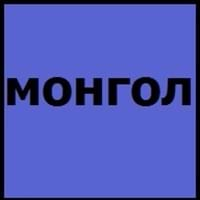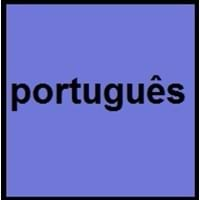Countries
China, Mongolia
Angola, Brazil, Cape Verde, East Timor, Equatorial Guinea, Guinea-Bissau, Macau, Mozambique, Portugal, São Tomé and Príncipe
National Language
China, Mongolia
Portugal
Second Language
Not spoken in any of the countries
United States of America
Speaking Continents
Asia
Africa, Asia, Australia, Europe, South America
Minority Language
Not spoken in any of the countries
Australia, Daman and Diu, France, Germany, Goa, Italy, Japan, United States of America
Regulated By
Council for Language and Literature Work, State Language Council (Mongolia)
Academia Brasileira de Letras (Brazilian Literary Academy), Academia das Ciências de Lisboa, Classe de Letras
Interesting Facts
- Mongolian was first written using Phagspa script in late 13th century.
- There is no connection between Mongolian, Japanese and Korean, but still in terms of grammar and sentence structure they are very similar.
- Portuguese language has absorbed many words from French, Italian, Arabic and also from indigenous South American and African languages.
- The first written document in Portuguese language was found in the 12th century.
Similar To
Turkish Language
Spanish and Galician Languages
Derived From
Not Available
Latin
Alphabets in
Mongolian-Alphabets.jpg#200
Portuguese-Alphabets.jpg#200
Scripts
Mongolian alphabets: Traditional Mongolian script
Latin
Writing Direction
Not Available
Left-To-Right, Horizontal
Hello
Сайн уу (Sain uu)
Olá
Thank You
та бүхэнд баярлалаа (ta bükhend bayarlalaa)
obrigado
How Are You?
Юу байна? (Yuu baina?)
Como você está?
Good Night
Сайн шөнийн (Sain shöniin)
boa noite
Good Evening
Сайн үдэш (Sain üdesh)
boa Noite
Good Afternoon
Сайн Үдээс хойш (Sain Üdees khoish)
boa Tarde
Good Morning
Өглөөний мэнд (Öglöönii mend)
bom Dia
Please
Хэрэв (Kherev)
Por Favor
Sorry
Уучлаарай (Uuchlaarai)
pesaroso
Bye
Баяртай (Bayartai)
tchau
I Love You
Би чамд хайртай (Bi chamd khairtai)
Eu te amo
Excuse Me
Өршөөгөөрэй (Örshöögöörei)
desculpe me
Dialect 1
Khalkha Mongolian
Brazilian Portuguese
Where They Speak
Mongolia
Brazil
How Many People Speak
Not Available
Dialect 2
Ordos Mongolian
European Portuguese
Where They Speak
Mongolia
Portugal
Dialect 3
Khorchin Mongolian
Daman and Diu Portuguese creole
Where They Speak
Mongolia
Daman and Diu
How Many People Speak
Not Available
Speaking Population
Not Available
Second Language Speakers
Not Available
Native Name
монгол (mongol) монгол хэл (mongol hêl)
Português
Alternative Names
Not Available
Português
French Name
mongol
portugais
German Name
Mongolisch
Portugiesisch
Pronunciation
/mɔŋɢɔ̆ɮ xiɮ/
[puɾtuˈɣeʃ], [poʁtuˈɡes]
Ethnicity
Not Available
Portuguese people or portugueses
Origin
1224-1225
3rd Century
Language Family
Mongolic family
Indo-European Family
Subgroup
Mongolian
Romance
Branch
Not Available
Not Available
Early Forms
Middle Mongolian, Classical Mongolian, Mongolian
Medieval Galician
Standard Forms
Khalkha, Southern Mongolian
Portuguese
Language Position
Not Available
Signed Forms
Mongolian Sign Language
Signed Portuguese
Scope
Macrolanguage
Individual
ISO 639 6
Not Available
Not Available
Glottocode
mong1331
port1283
Linguasphere
part of 44-BAA-b
51-AAA-a
Language Type
Living
Living
Language Linguistic Typology
Subject-Object-Verb
Subject-Verb-Object
Language Morphological Typology
Not Available
Not Available
Mongolian and Portuguese Greetings
People around the world use different languages to interact with each other. Even if we cannot communicate fluently in any language, it will always be beneficial to know about some of the common greetings or phrases from that language. This is where Mongolian and Portuguese greetings helps you to understand basic phrases in Mongolian and Portuguese language. Mongolian word for "Hello" is Сайн уу (Sain uu) or Portuguese word for "Thank You" is obrigado. Find more of such common Mongolian Greetings and Portuguese Greetings. These greetings will help you to be more confident when conversing with natives that speak these languages.
Mongolian vs Portuguese Difficulty
The Mongolian vs Portuguese difficulty level basically depends on the number of Mongolian Alphabets and Portuguese Alphabets. Also the number of vowels and consonants in the language plays an important role in deciding the difficulty level of that language. The important points to be considered when we compare Mongolian and Portuguese are the origin, speaking countries, language family, different greetings, speaking population of these languages. Want to know in Mongolian and Portuguese, which language is harder to learn? Time required to learn Mongolian is 44 weeks while to learn Portuguese time required is 24 weeks.





